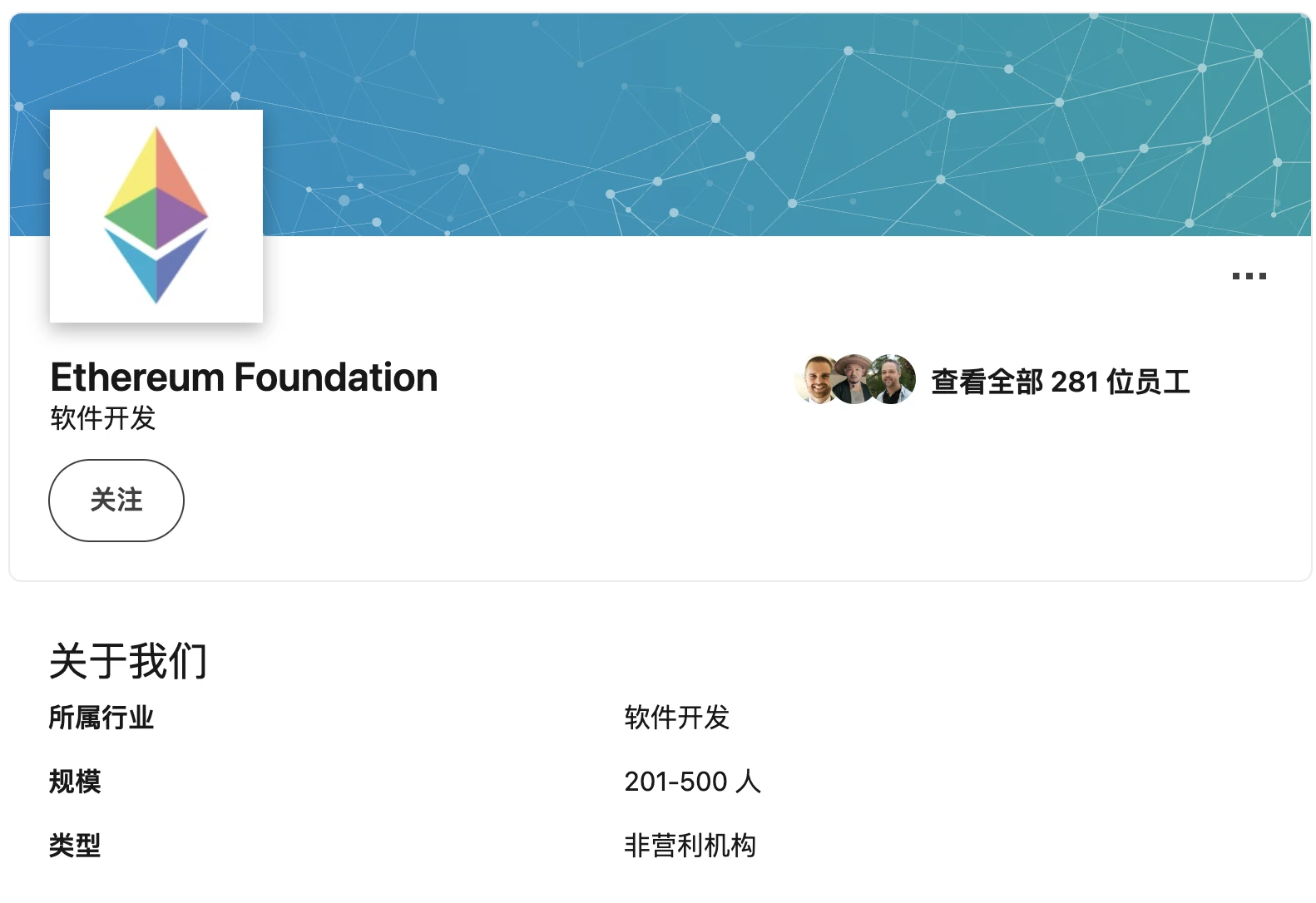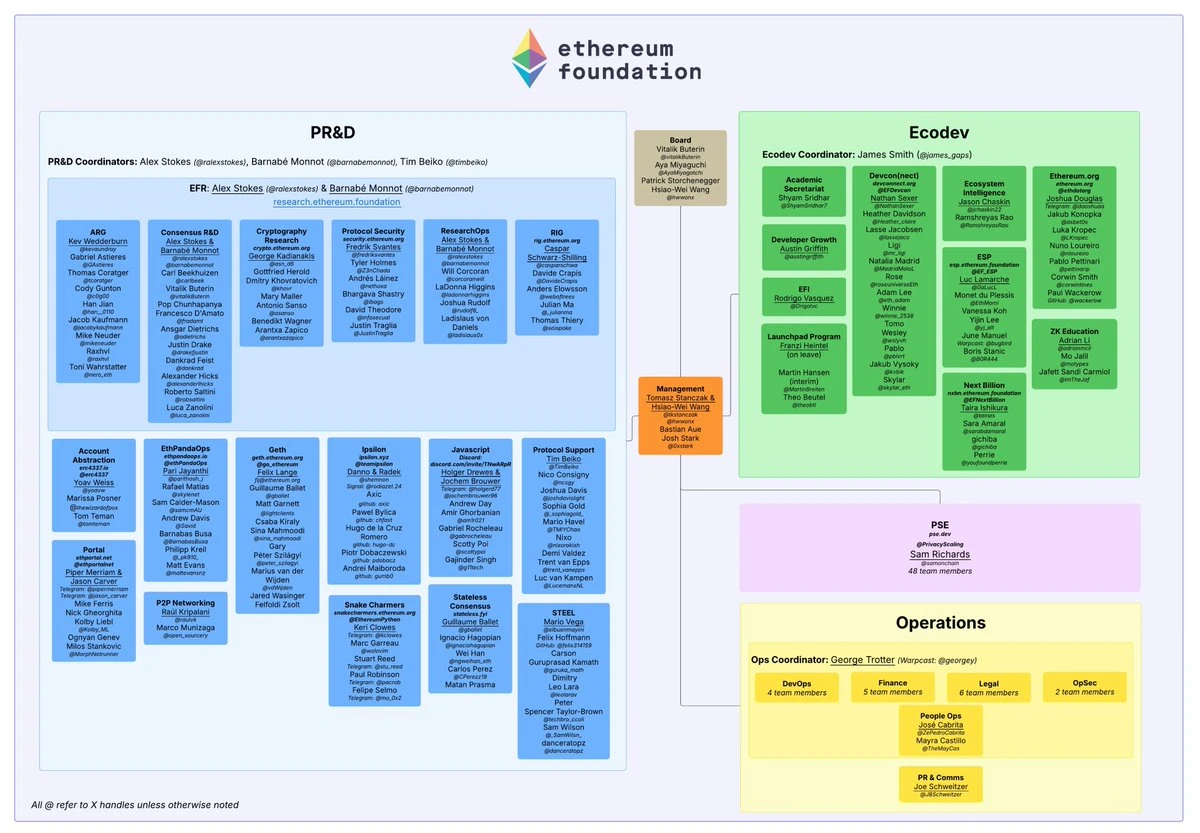Original | Odaily Planet Daily ( @OdailyChina )
Author: Wenser ( @wenser 2010 )

As the price of ETH rises above $2,700, the loyal E guards burst into tears again, even though their entry price may be $3,000 or even higher. As the official core role of the Ethereum ecosystem, the actions of the Ethereum Foundation (hereinafter referred to as EF) undoubtedly affect everyones heart. Recently, EF Executive Director Hsiao-Wei Wang gave some of his own views and planning instructions on the subsequent development of EF in an offline interview with Bruce Xu , co-founder of ETF Panda . Odaily Planet Daily will combine the content of this interview to sort out the possible subsequent development of EF in this article.
Highlight 1: What are the potential explosive applications and exploratory application areas in the Ethereum ecosystem?
When asked, Which application areas in the Ethereum ecosystem may usher in an explosion, and which directions are still being explored? Wang Xiaowei replied: I personally find identity and SocialFi more interesting recently. For example, a small program in the Farcaster ecosystem that allows you to see the games your friends are playing and supports quick sharing. Although it still has some time to explode, it is relatively easier to penetrate into the daily lives of ordinary users and can quickly find its own user group. As for large projects, they still tend to be financial-related products, such as DeFi innovations; in addition, RWA should also belong to the application category, and its subsequent development is worth looking forward to.
Overall, Wang Xiaoweis answer was quite satisfactory. It can be seen that EF does not have a particularly clear support plan or promotion ideas for the subsequent application layer development of the Ethereum ecosystem. This is different from the commercial application development logic of the Solana ecosystem. This is the biggest shortcoming of the Ethereum ecosystem at present.
Highlight 2: EF’s internal organizational structure?
Regarding EF’s organizational structure, Wang Xiaowei replied: “ EF’s general structure includes: first, the board of directors, then the management team, and under that, there are three business clusters, which are not strictly defined departments.
The first is the Operations department, which includes Finance, HR, and Legal, which are needed for the daily operations of a company or a foundation.
The second is the Development (technology, investment research) department. After some recent large spin-offs, it is now mainly focused on Protocol RD, and the Research Team is also in this development department.
The third is the Eco Dev (Ecosystem Development) department, which is related to ecological development. This part may include departments that issue Grants such as ESP and Next Billion Fellowship.
In addition, it is worth mentioning that according to the LinkedIn interface , the number of active members under the EF organization is 281, which is an absolutely medium-sized organization.

EF official organization number interface
Regarding the communitys concern about whether EF does not have its own marketing department, Wang Xiaowei also responded positively: Like Josh Stark said, Ethereum doesnt have a BD team, Ethereum has one hundred BD teams (Odaily Planet Daily translation: Ethereum officially has no business development team, but the Ethereum ecosystem has countless BD teams). For other applications, whether it is Layer 2 or some Dapps, their BD teams are also like our BD teams. We dont regard Ethereum as our own brand. For example, like Twitter, we have recently changed some accounts on Twitter. Since the beginning of this year, there is now an Ethereum account and an Ethereum Foundation account. I think the separation is quite good, because in the past, every time we used the Ethereum account to post something, it seemed that everyone would think that this was the meaning of the foundation, which was very restricted. Now use this account to do BD-like things and do some publicity work to help the community understand what major events are happening now. Anyway, I think this separation is very good, and both accounts on both sides can be used for their own purposes.

EF internal structure organization chart
Highlight 3: What are the possible subsequent fund flows of EF?
Regarding the EFs funding operation model and potential funding channels that the community has always paid attention to, Wang Xiaowei responded: This year, the foundation began to actively participate in DeFi. In early February, there was a wave of deployment. We put some ETH DeFi Lending and started to try it. The second phase is also planned. We are evaluating whether to increase investment in Lending or explore more creative ways to use ETH assets;
The second major area is Staking. We are also exploring different Staking Options and considering whether EF’s participation in Staking can bring positive benefits.
The third point is still in the exploration stage, which is Tokenization, such as participating in some RWA. Our participation is mainly in some more conservative funds, or funds that are better for L1.
Generally speaking, perhaps due to Vitalik and EF members’ lack of interest in the DeFi speculation craze, EF’s current sources of income are still relatively limited. However, ETH’s long-standing poor market price and complaining community feedback have, to a certain extent, pushed EF to take a new step and try more diversified operations to generate income for itself.
Highlight 4: What was the reason behind EF’s previous coin selling and market crash?
Simply put, to survive.
Regarding the “small sale of 100 ETH” and other behaviors that the community is extremely concerned about, Wang Xiaowei responded, “We have to sell it because we now have two to three hundred people in the foundation, and about 75% of the expenditure is in fiat currency, and 25% is in Crypto.
So the first point is that if the foundation needs to operate, it needs to rebalance its assets.
The second is that our community may not be aware that we have this need, so we may need to strengthen communication.
There is one more thing I want to say first. We don’t sell coins at high points. People often say that we sell at high points, but in fact, many times we sell at low points. When it is at a low point, people don’t magnify it. We don’t have too many designs here. ”
In response to the communitys suggestion that EF may adopt a more covert or OTC method to sell coins, Wang Xiaowei also responded positively: Our main Treasury is actually very open and transparent, so maybe this is okay in the short term, but everyone can see the changes in the main Treasury.
On the premise of adhering to EFs own mission of decentralization and transparency, in their view, making similar ETH sales public is undoubtedly a better choice.
Highlight 5: Will EF gradually disappear as the community develops?
Some people speculate that EF may gradually fade out or disband after completing a certain mission or stage, allowing the community to drive the operation of Ethereum. If that day really comes, how do you think the Ethereum community will operate?
In response to this question, Wang Xiaowei, standing in the position of EF executive director, gave her own insights. She mentioned: First of all, for the foundation, this year (2025) is a particularly important year. We have invested a lot of budget in the transformation of the entire organization. Perhaps next year, if the foundation finds that there are more entities in the community that can replace the foundations role, we can operate in a conservative and contracted state.
What’s interesting is that we need to change our strategy every year. The topics that the foundation focuses on may be different every year. Maybe when the foundation focuses on the protocol, its presence will be stronger. So maybe in the future, when we focus on the application layer or the wallet, we may not need such a strong presence. So this presence changes every year.
I personally hope that the foundation can always think about how we can increase the number of people who can do what we do today. In the future, what are the things that only we can do? Maybe we will continue to do them.
For example, the coordination part depends a lot on the changes of various factors in the future, as well as some support from the community. If the community can do well, the foundation can turn to more complex things, or things that are less lacking in attention.
In summary, the future of EF is not only in the hands of EF members, but also depends on the development and subsequent direction of the Ethereum ecosystem and community.
Recommended reading:
Who will save Ethereum from its midlife crisis? Can Wang Xiaowei help?










